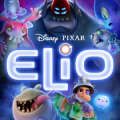Snow White
Review
I remember the first time I booted up Snow White; it was an experience that felt like stepping into a living, breathing fairy tale. I was immediately drawn into a world where every element whispered secrets of magic and wonder.
Snow White review
A Surreal Beginning
I remember the first time I booted up Snow White; it was an experience that felt like stepping into a living, breathing fairy tale. I was immediately drawn into a world where every element whispered secrets of magic and wonder. The interface greeted me with a blend of classic charm and innovative twists that filled me with both curiosity and nostalgia. This game, which reinterprets a much-loved tale in its own unique way, had a mysterious allure that compelled me to explore every intricately designed detail.
The Enchanting Gameplay
From the moment I began my journey, the gameplay in Snow White evoked a sense of adventure that continuously surprised me. Unlike typical adaptations, this version provided a mix of exploration, puzzles, and interactive sequences that kept me on my toes. I found myself navigating through dense enchanted forests, solving riddles that demanded creative thinking, and interacting with characters whose dialogues were as whimsical as they were thought-provoking. Every move felt deliberate, urging me to combine strategic planning with an open-minded exploration of the game’s magical environment.
A Journey Through Mechanics
One of the aspects that truly impressed me was the sophisticated game mechanics underlying every action. I experienced a level of interactivity that went beyond simple point-and-click scenes. The mechanics allowed me to interact with objects in dynamic ways that influenced not only immediate outcomes but also the broader narrative. For instance, minor decisions in a seemingly isolated puzzle later unveiled layers of hidden lore, making me appreciate the seamless integration of game mechanics with storytelling. The controls were intuitive, enhancing my immersion as I manipulated the environment to reveal secrets and progress through the tale in a manner that felt both organic and rewarding.
Magical Aesthetics
The visual presentation of Snow White left me in awe from the very first frame. The art style was a masterful blend of classic illustrations with modern digital artistry. I was captivated by hand-drawn textures, vibrant color palettes, and a distinct visual flair that paid homage to traditional fairy tale illustrations while reinventing them in a digital space. Every frame evoked a sense of wonder and whimsy that transcended the typical genre boundaries. I marveled at the details: the delicate play of light on enchanted trees, the ethereal glow of magical creatures, and the meticulously animated expressions of characters that made the narrative feel alive. Exploring these visual details was like walking through the pages of an ancient storybook, where every page offered a fresh perspective on a classic legend.
Sound and Rhythm
While the graphics painted a vivid picture of the world, the audio design provided the soul of the experience. The soundtrack seamlessly intertwined with the narrative, setting a pace that varied between moments of serene calm and bursts of dramatic intensity. I was particularly struck by how the background score adjusted to my actions in real time, transforming simple moments of exploration into emotionally charged experiences. Ambient sounds, such as the rustling of leaves and the murmur of distant streams, added an immersive layer that deepened my connection to the game. The carefully composed musical scores and sound effects were a constant reminder of the enchanted world I had willingly become a part of, each note resonating with the magic of the story’s heart.
Narrative Depth Beyond the Surface
What truly set Snow White apart was its narrative depth, an aspect that resonated deeply with me as I progressed through the game. I noticed that the storyline was not merely a rehash of the well-known tale but a rich tapestry interwoven with multiple subplots and intriguing characters. The game challenged preconceived notions by infusing complex moral choices and dilemmas that left me pondering the true nature of good and evil. Each character I encountered was imbued with their own history, motivations, and vulnerabilities, making them feel like real individuals rather than mere archetypes. This narrative complexity invited me to invest emotionally in the journey, creating a personal connection to a story that was both familiar and refreshingly original.
Immersive World-Building
As I delved deeper into Snow White, I found that the level of world-building was one of the game’s most captivating features. The richly detailed environments, from mystical woods to hidden castles, were crafted with an almost obsessive care for lore and atmosphere. Every element of the game’s design contributed to an overarching universe that was coherent and compelling. I encountered hidden symbols, ancient runes, and environmental storytelling that hinted at a history far grander than what was visible on the surface. This immersive world-building encouraged me to explore every nook and cranny, piecing together the mythos of the game one subtle clue at a time. The attention to detail not only enhanced the aesthetic quality but also served as a narrative thread that wove the entire experience into a tightly knit fabric of lore and mystery.
Emotional Interactivity
Throughout my playthrough, I was struck by the emotional interactivity that Snow White offered. Unlike many contemporary games that rely heavily on scripted moments, this game provided multiple pathways for emotional expression and decision-making. I found that my choices, no matter how small, had a palpable impact on the unfolding narrative. The dialogue options and interactive sequences allowed me to deeply empathize with the characters and the world they inhabited. Whether I was assisting the woodland creatures, participating in elaborate feasts, or engaging in heartfelt conversations, every interaction built a bridge between me and the unfolding drama. The game managed to channel a raw and authentic emotional resonance that elevated it beyond a mere visual and mechanical experience, inviting me to reflect on themes of loyalty, sacrifice, and the timeless struggle between light and darkness.
Strategic Puzzle Integration
One of the most enthralling challenges in Snow White was its clever integration of puzzles and strategic challenges. I found that the puzzles were not inserted as mere afterthoughts but were seamlessly incorporated into the overall narrative flow. Each puzzle felt organically linked to the story as it often involved deciphering ancient riddles or unlocking secret chambers imbued with magical properties. I appreciated how these challenges required a blend of logical reasoning, pattern recognition, and creative thinking. Every time I successfully solved a puzzle, I experienced a surge of accomplishment that was deeply tied to the narrative progression. This harmonious blend of strategy and storytelling kept my engagement levels high, inviting me to continuously push my boundaries and revisit earlier clues with a fresh perspective.
Refining Controls and Interface Design
Another standout feature for me was the refined control system and the intuitive interface design that underpinned the game. The developers paid great attention to ensuring that the learning curve was gentle and that the controls were intuitive enough for both newcomers and seasoned gamers. I was able to navigate intricate environments and perform complex sequences without feeling overwhelmed. The interface was minimalistic yet informative, providing essential cues without detracting from the immersion. Tools and options were designed to be both accessible and deeply functional, enhancing the overall user experience. This coherent design philosophy enabled me to focus more on the unfolding story and the enchanting world around me rather than being bogged down by cumbersome mechanics.
Artistic Inspirations and Cultural Touchstones
As I continued to explore Snow White, I began to recognize the many artistic inspirations and cultural touchstones that enriched its narrative. The game drew on a vast reservoir of mythological lore, blending elements from various traditional fairy tales with a contemporary twist that resonated with modern sensibilities. I found that references to ancient folklore were cleverly embedded in character designs, narrative arcs, and environmental details, inviting me to appreciate both the historical context and the creative reinterpretation. This interplay between the old and the new provided a refreshing lens through which to view the classic tale. I marveled at the way the game managed to honor its source material while boldly introducing innovative elements that redefined the character’s journey through modern narrative techniques and artistic experimentation.
Immersive Character Interactions
Interacting with the characters in Snow White was an experience that truly captivated me. Each character was thoughtfully crafted with unique personalities, backstories, and emotional layers. I was drawn to the subtle nuances in their dialogues—the inflections of voice, the sincerity in their expressions, and the underlying complexities that hinted at hidden agendas or griefs. I spent countless hours engaged in conversation, each exchange peeling back another layer of the character’s identity. The relationships I developed were not static; they evolved based on my actions and choices, providing a dynamic interplay that felt remarkably lifelike. The emotional weight of these interactions was profound, making every conversation feel like an opportunity for insight rather than a mere facet of gameplay.
Interactive Environments and Hidden Mysteries
One of the aspects that continuously surprised me was the interactivity of the environments in Snow White. I enjoyed discovering that every location, from densely overgrown ruins to pristine, sunlit clearings, held hidden mysteries waiting to be unveiled. The game encouraged a playful curiosity where even the smallest details could trigger a chain of events or reveal a long-forgotten secret. I spent hours meticulously combing through enchanted areas, finding that every seemingly trivial object was a potential clue or piece of lore. This environment design was exceptionally thoughtful, providing endless opportunities for exploration and creative investigation. The sense of discovery was ever-present, urging me to continually peel back layers of the magical world until I could uncover the deepest secrets hidden within its fabric.
Dynamic Story Arcs and Plot Twists
While many games rely on linear storytelling, Snow White expertly employed dynamic story arcs that kept me guessing at every turn. I was drawn into a narrative that was full of unexpected plot twists and narrative turns which deviated from conventional fairy tale paths. The way the story unfolded was as if I were reading a living manuscript that adapted to my choices and actions in real time. I was continually surprised by revelations that challenged my assumptions and recast familiar characters in a new light. This dynamic narrative structure pushed me to think critically about my actions and the story itself, transforming every decision into a moment of suspense and anticipation. Each plot twist felt earned, intricately woven into the narrative without ever feeling forced or contrived.
Charming Details and Subtle Nuances
Beyond the grand story and striking visuals, it was the subtle nuances that enriched my journey. I found that small, charming details were scattered throughout Snow White, each one contributing to an immersive atmosphere. Whether it was the way a gentle breeze rustled through the leaves or the delicate shimmer of magical dust in the twilight, these details brought the world to life in a way that made every moment feel precious. I appreciated how the developers invested time in perfecting animations that captured the natural rhythms of the game’s world, ensuring that nothing felt out of place. It was clear to me that every component of the game, no matter how minute, was deliberate and filled with a sense of purpose that reflected the overarching magic of the narrative.
Immersive Interactivity With the World Around Me
Engaging with Snow White was not just about advancing through levels; it was a continuous conversation with a living world. I quickly learned that the game was built on a philosophy where every element, every creature, and every whisper of the wind contributed to a cohesive experience. I willingly spent hours pondering over inscriptions on ancient walls and decoding symbolic imagery that hinted at stories from a bygone era. The interactive elements were designed to encourage reflection, prompting me to consider not only the immediate tasks ahead but also the wider implications of the narrative on the world itself. I felt as if I were part of an elaborate, ongoing dialogue with the enchanted environment, one that was both intellectually stimulating and emotionally enriching.


















